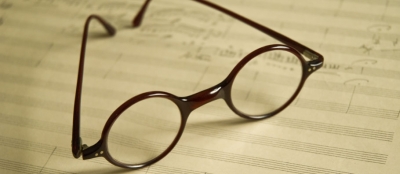
ARCHIVE HOLDINGS
The documentary holdings of the Archivo Manuel de Falla are divided into the following collections:
SCORES AND MUSICAL MANUSCRIPTS
The collection of scores and musical manuscripts allows the researcher to follow the composition of Manuel de Falla’s works from their first sketches to the final versions. A catalogue of these documents, compiled by Professor Antonio Gallego, was published by the Spanish Ministry of Culture in 1987, and this serves as the basis for the current system of classification.
CORRESPONDENCE
With more than 23,000 documents, the correspondence collection is the most extensive in the Archive. The collection is especially interesting because, from around 1914 onwards, Manuel de Falla preserved drafts and carbon copies of the letters he sent, allowing the near-complete reconstruction of the correspondence between the composer and those with whom he interacted.
PERSONAL DOCUMENTATION AND OTHER MANUSCRIPTS
These documents yield valuable insights into the ideas and creative processes of the composer and of his period, and into his daily life.
MANUEL DE FALLA’S PERSONAL LIBRARY
This comprises around 4,500 books and printed scores, in addition to various issues of 223 different periodicals. Around a third of the items are annotated by the composer or inscribed to him.
PHOTOGRAPHS
There are around 2,300 items in the Archive’s photograph collection, which has been restored and catalogued with the support of the Dirección General de Archivos Estatales of the Ministry of Culture.
CONCERT PROGRAMMES
Printed programmes from concerts featuring works by Manuel de Falla, and concerts in which the composer participated as a performer. The collection also includes programmes of other concerts that the composer attended.
PRESS
Cuttings from the Spanish and international press relating to Manuel de Falla, his works, and matters that interested him. Many of the cuttings were collected by the composer himself.
OTHER COLLECTIONS
The Archivo Manuel de Falla possesses other, smaller collections, including Audiovisual Material (containing historical recordings and pressings from the first half of the twentieth century), and Graphic Material (including posters, sketches for costumes and sets, paintings, etc.)
SCORES AND MUSICAL MANUSCRIPTS
The collection of scores and musical manuscripts allows the researcher to follow the composition of Manuel de Falla’s works from their first sketches to the final versions. A catalogue of these documents, compiled by Professor Antonio Gallego, was published by the Spanish Ministry of Culture in 1987, and this serves as the basis for the current system of classification.
CORRESPONDENCE
With more than 23,000 documents, the correspondence collection is the most extensive in the Archive. The collection is especially interesting because, from around 1914 onwards, Manuel de Falla preserved drafts and carbon copies of the letters he sent, allowing the near-complete reconstruction of the correspondence between the composer and those with whom he interacted.
PERSONAL DOCUMENTATION AND OTHER MANUSCRIPTS
These documents yield valuable insights into the ideas and creative processes of the composer and of his period, and into his daily life.
MANUEL DE FALLA’S PERSONAL LIBRARY
This comprises around 4,500 books and printed scores, in addition to various issues of 223 different periodicals. Around a third of the items are annotated by the composer or inscribed to him.
PHOTOGRAPHS
There are around 2,300 items in the Archive’s photograph collection, which has been restored and catalogued with the support of the Dirección General de Archivos Estatales of the Ministry of Culture.
CONCERT PROGRAMMES
Printed programmes from concerts featuring works by Manuel de Falla, and concerts in which the composer participated as a performer. The collection also includes programmes of other concerts that the composer attended.
PRESS
Cuttings from the Spanish and international press relating to Manuel de Falla, his works, and matters that interested him. Many of the cuttings were collected by the composer himself.
OTHER COLLECTIONS
The Archivo Manuel de Falla possesses other, smaller collections, including Audiovisual Material (containing historical recordings and pressings from the first half of the twentieth century), and Graphic Material (including posters, sketches for costumes and sets, paintings, etc.)



